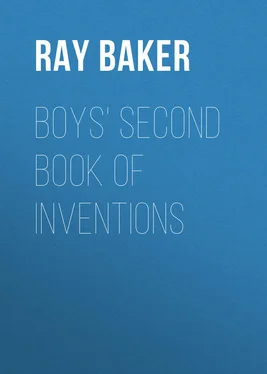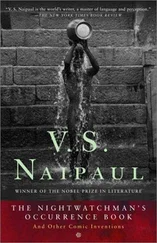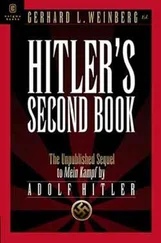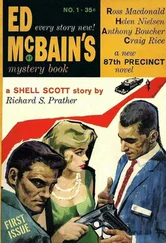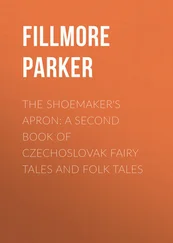Ray Baker - Boys' Second Book of Inventions
Здесь есть возможность читать онлайн «Ray Baker - Boys' Second Book of Inventions» — ознакомительный отрывок электронной книги совершенно бесплатно, а после прочтения отрывка купить полную версию. В некоторых случаях можно слушать аудио, скачать через торрент в формате fb2 и присутствует краткое содержание. Издательство: Иностранный паблик, Жанр: foreign_antique, foreign_prose, foreign_children, на английском языке. Описание произведения, (предисловие) а так же отзывы посетителей доступны на портале библиотеки ЛибКат.
- Название:Boys' Second Book of Inventions
- Автор:
- Издательство:Иностранный паблик
- Жанр:
- Год:неизвестен
- ISBN:нет данных
- Рейтинг книги:4 / 5. Голосов: 1
-
Избранное:Добавить в избранное
- Отзывы:
-
Ваша оценка:
- 80
- 1
- 2
- 3
- 4
- 5
Boys' Second Book of Inventions: краткое содержание, описание и аннотация
Предлагаем к чтению аннотацию, описание, краткое содержание или предисловие (зависит от того, что написал сам автор книги «Boys' Second Book of Inventions»). Если вы не нашли необходимую информацию о книге — напишите в комментариях, мы постараемся отыскать её.
Boys' Second Book of Inventions — читать онлайн ознакомительный отрывок
Ниже представлен текст книги, разбитый по страницам. Система сохранения места последней прочитанной страницы, позволяет с удобством читать онлайн бесплатно книгу «Boys' Second Book of Inventions», без необходимости каждый раз заново искать на чём Вы остановились. Поставьте закладку, и сможете в любой момент перейти на страницу, на которой закончили чтение.
Интервал:
Закладка:
Two years after Becquerel's discovery of the radio-activity of uranium Professor Pierre Curie and Madame Curie, of Paris, made the discovery that some of the samples of pitch-blende which they had were much more powerful than any uranium that they had used.
Was there, then, something more powerful than uranium within the pitch-blende? They began to "boil down" the waste rock left at the uranium mines, and found a strange new element, related to uranium but different, to which Madame Curie gave the name polonium, after her native land, Poland.
Then they did some more boiling down, and succeeded in isolating an entirely new substance, and the most radio-active yet discovered – radium. Shortly after that Debierne discovered still another radio-active substance, to which he gave the name actinium.
Thus three new elements were added to the list of the world's substances, and the most wonderful of these is radium. In a day, almost, the Curies became famous in the scientific world, and many of the greatest investigators in the world – Lord Kelvin, Sir William Crookes, and others – took up the study of radium.
Very rarely have a man and woman worked together so perfectly as Professor Curie and his wife. Madame Curie was a Polish girl; she came to Paris to study, very poor, but possessed of rare talents. Her marriage with M. Curie was such a union as must have produced some fine result. Without his scientific learning and vivid imagination it is doubtful if radium would ever have been dreamed of, and without her determination and patience against detail it is likely the dream would never have been realised.
One of the chief problems to be met in finding the secrets of radium is the great difficulty and expense, in the first place, of getting any of the substance to experiment with. The Curies have had to manufacture all they themselves have used. In the first place, pitch-blende, which closely resembles iron in appearance, is not plentiful. The best of it comes from Bohemia, but it is also found in Saxony, Norway, Egypt, and in North Carolina, Colorado, and Utah. It appears in small lumps in veins of gold, silver, and mica, and sometimes in granite.
Comparatively speaking, it is easy to get uranium from pitch-blende. But to get the radium from the residues is a much more complicated task. According to Professor Curie, it is necessary to refine about 5,000 tons of uranium residues to get a kilogramme – or about 2.2 pounds – of radium.
It is hardly surprising, therefore, considering the enormous amount of raw material which must be handled, that the cost of this rare mineral should be high. It has been said that there is more gold in sea-water than radium in the earth. Professor Curie has an extensive plant at Ivry, near Paris, where the refuse dust brought from the uranium mines is treated by complicated processes, which finally yield a powder or crystals containing a small amount of radium. These crystals are sent to the laboratory of the Curies where the final delicate processes of extraction are carried on by the professor and his wife.
And, after all, pure metallic radium is not obtained. It could be obtained, and Professor Curie has actually made a very small quantity of it, but it is unstable, immediately oxidised by the air and destroyed. So it is manufactured only in the form of chloride and bromide of radium. The "strength" of radium is measured in radio-activity, in the power of emitting rays. So we hear of radium of an intensity of 45 or 7,000 or 300,000. This method of measurement is thus explained. Taking the radio-activity of uranium as the unit, as one, then a certain specimen of radium is said to be 45 or 7,000 or 300,000 times as intense, to have so many times as much radio-activity. The radium of highest intensity in this country now is 300,000, but the Curies have succeeded in producing a specimen of 1,500,000 intensity. This is so powerful and dangerous that it must be kept wrapped in lead, which has the effect of stopping some of the rays. Rock-salt is another substance which hinders the passage of the rays.
English scientists have devised a curious little instrument, called the spinthariscope, which allows one actually to see the emanations from radium and to realise as never before the extraordinary atomic disintegration that is going on ceaselessly in this strange metal. The spinthariscope is a small microscope that allows one to look at a tiny fragment of radium supported on a little wire over a screen.
The experiment must be made in a darkened room after the eye has gradually acquired its greatest sensitiveness to light. Looking intently through the lenses the screen appears like a heaven of flashing meteors among which stars shine forth suddenly and die away. Near the central radium speck the fire-shower is most brilliant, while toward the rim of the circle it grows fainter. And this goes on continuously as the metal throws off its rays like myriads of bursting, blazing stars. M. Curie has spoken of this vision, really contained within the area of a two-cent piece, as one of the most beautiful and impressive he ever witnessed; it was as if he had been allowed to assist at the birth of a universe. Radium emits radiations, that is, it shoots off particles of itself into space at such terrific speed that 92,500 miles a second is considered a small estimate. Yet, in spite of the fact that this waste goes on eternally and at such enormous velocity, the actual loss sustained by the radium is, as I have said, infinitesimal.
We now come to one of the most interesting phases of the whole subject of radium – that is, the influence which its strange rays have upon animal life. Mr. Cleveland Moffett, to whom I am indebted for the facts of the following experiments, recently visited M. Danysz, of the Pasteur Institute in Paris, who has made some wonderful investigations in this branch of science. M. Danysz has tried the effect of radium on mice, rabbits, guinea-pigs, and other animals, and on plants, and he found that if exposed long enough they all died, often first losing their fur and becoming blind.
But the most startling experiment performed thus far at the Pasteur Institute is one undertaken by M. Danysz, February 3, 1903, when he placed three or four dozen little larvæ that live in flour in a glass flask, where they were exposed for a few hours to the rays of radium. He placed a like number of larvæ in a control-flask, where there was no radium, and he left enough flour in each flask for the larvæ to live upon. After several weeks it was found that most of the larvæ in the radium flask had been killed, but that a few of them had escaped the destructive action of the rays by crawling away to distant corners of the flask, where they were still living. But they were living as larvæ, not as moths , whereas in the natural course they should have become moths long before, as was seen by the control-flask, where the larvæ had all changed into moths, and these had hatched their eggs into other larvæ, and these had produced other moths. All of which made it clear that the radium rays had arrested the development of these little worms.
More weeks passed, and still three or four of the larvæ lived, and four full months after the original exposure one larva was still alive and wriggling, while its contemporary larvæ in the other jar had long since passed away as aged moths, leaving generations of moths' eggs and larvæ to witness this miracle, for here was a larva, venerable among his kind, that had actually lived through three times the span of life accorded to his fellows and that still showed no sign of changing into a moth. It was very much as if a young man of twenty-one should keep the appearance of twenty-one for two hundred and fifty years!
Not less remarkable than these are some recent experiments made by M. Bohn at the biological laboratories of the Sorbonne, his conclusions being that radium may so far modify various lower forms of life as to actually produce new species of "monsters," abnormal deviations from the original type of the species. Furthermore, he has been able to accomplish with radium what Professor Loeb did with salt solutions – that is, to cause the growth of unfecundated eggs of the sea-urchin, and to advance these through several stages of their development. In other words, he has used radium to create life where there would have been no life but for this strange stimulation.
Читать дальшеИнтервал:
Закладка:
Похожие книги на «Boys' Second Book of Inventions»
Представляем Вашему вниманию похожие книги на «Boys' Second Book of Inventions» списком для выбора. Мы отобрали схожую по названию и смыслу литературу в надежде предоставить читателям больше вариантов отыскать новые, интересные, ещё непрочитанные произведения.
Обсуждение, отзывы о книге «Boys' Second Book of Inventions» и просто собственные мнения читателей. Оставьте ваши комментарии, напишите, что Вы думаете о произведении, его смысле или главных героях. Укажите что конкретно понравилось, а что нет, и почему Вы так считаете.
